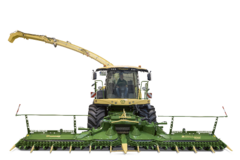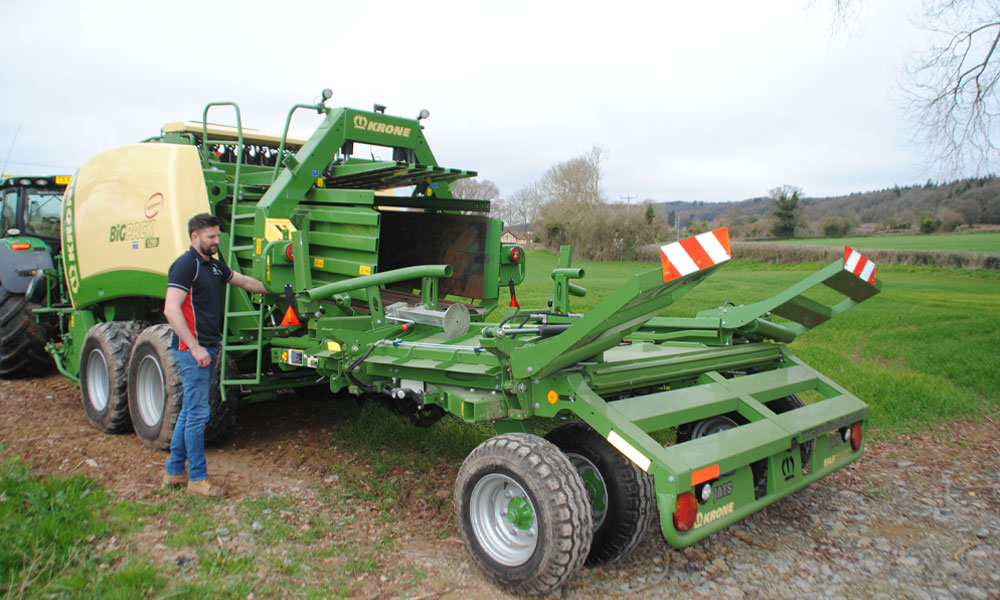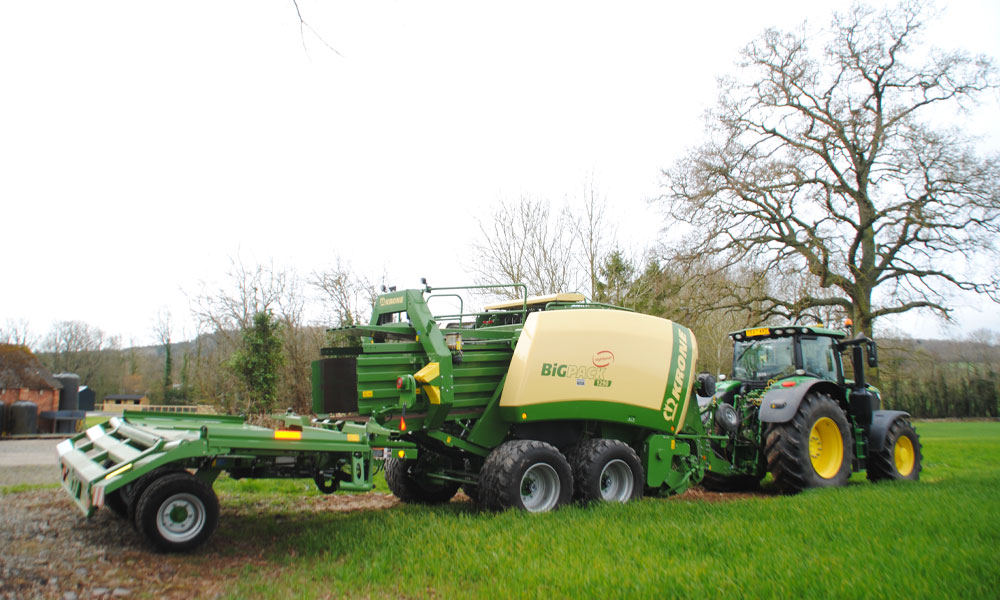Taking the collection
Investing in an integrated large square bale collector has enabled a Herefordshire contractor to add vale to its baling service.
Two hands are better than one the adage states. It is a philosophy followed by Herefordshire contractors Jack Jay and Ashley Quested. Jack trades as Jay’s Farm Services, Ashley as A Quested Contracting but eleven years and ago they joined forces to form Agricultural Contracting & Excavations Herefordshire (ACE).
Through a policy of investing in individually- and jointly-owned machinery the venture is enable to provide farmers in both the livestock and arable sectors with a wide range of services. These include a full stubble-to-stubble contracts, cultivations and drilling, muck spreading, large and conventional baling, hay making, combine harvesting, spraying and sugar beet lifting. It also provides a comprehensive range of groundwork services. A Quested Contracting is also a distributor for Larrington trailers.
The three businesses operate locally, Jay’s Farm Services in a 25km radius from its base at Moorhampton. “That farmers know the range of services we can provide is available locally is the key, although we do go as far as Hampshire to lift sugar beet,” says Jack, who, as Jay’s Farm Services, does all the arable and grassland cultivations and drilling. Baling is a core activity. “I learnt about baling on my father’s conventional baler and I’ve always had an interest in the operation,” he says.
Currently Jay’s Farm Services has four big balers: three New Hollands (a BB940 and two BB980s), and a six-string, twin axle, Krone BiGPack 1290 with a steering rear axle. In a typical season, and working in fields with an average size of 15-20 acres, the balers make 2500 bales of oilseed rape haulm, 8000 wheat straw bales and a similar number of hay bales (rye grass, primarily for animal fodder). Over the past five years an MF conventional balers has made 65,000 bales, mainly for the equine and small holder sectors.
In the rye grass the timing of operations is critical and to be able to take full advantage of good weather windows the business uses high output equipment ahead of the balers; front- and rear-mounted double mowers, a six-rotor tedder and a four-rotor rake.
“We won’t bale when its wet,” says Jack. He adds that due to the competitiveness of the round baler sector it is not viable, nor is silage as there are few dairy farms in the area.
He is aware that his responsibilities to his customers include not only Jay’s Farm Services doing the best job it also has an important role in minimising the spread of grass weeds – especially black grass. “It is a serious problem,” he says. “It is critical we keep the balers clean and we blow them off every morning before they go out the yard, in the field when we have finished and again back at the yard.”
By doing so they lose time, it can take up to 35 minutes in the field, but it is part of the high standard, conscientious service they offer customers.
Avoiding compaction is also important, says Jack, whose latest investment is in an attachment to keep compaction to a minimum: Krone’s BaleCollect system, which attaches to the modified rear of the BiGPack 1290.
“I saw a video of one working on a visit to the Krone factory,” he says, “and Dan Mallard of Krone UK managed to get one to us for last season, at the time it was the only one in the country.” Modifying the baler to take the sled was done by Stuart Linton of Pallisters. (Dan Mallard says Krone UK have taken several orders for the coming season.)
Jack admits to “taking a risk” buying the BaleCollect without an in-field demonstration. “But,” he says “we always like to do something different and I thought the sled a very good idea; I saw its value-added potential.”
Last season the attachment collected 11,500 bales without a hitch. “We drop the bales in twos or threes, depending on how many bales the customer’s handling equipment will carry,” he says.
“It does mean more fuel, you need a 400-litre diesel tank for a good day, but the sled has reduced significantly the amount of travelling on the field, the time and fuel use when it is being cleared. This season we will be running the combination on a 250hp rather than a 220hp, boosted, tractor for the hills but our intention is to streamline the baler fleet and run two Krone BiGPacks, a 1290 and a 1270 MultiPack, both fitted with a BaleCollect.”
The overall length of the train is 11.15m with the 2500kg BaleCollect in the working configuration, 11.85m in the transport position.
“The BaleCollect was expensive but it makes the job more efficient all-round,” Jack Jay says. “Also, it is a long-term investment, we will be running it for around 15 seasons.”
Modifying the baler involves removing the tailgate, the fitting of additional brackets and routing some extra hydraulics to the rear of the machine. The BaleCollect runs off the baler’s hydraulics so it is a completely self-contained unit.
Jack Jay extends the BaleCollect into the working position. For safety this can be done only through an additional control button, which is also used to retract the sled, on the rear of the baler.
When the last bale in the sequence triggers the sensor on the sled bed the arm automatically sweeps forward to deposit the bales. The sled is controlled through the CCI 2000 terminal screen and can be programmed to automatically deposit up to 3 bales on 6-string balers, 5 on 4-string. The sequence can be manually overridden to drop the bales on the headland.
In the working position the sled’s wheels act as castors to provide a tight turning circle. They lock automatically when the combination is reversed in a straight line and for road transport.
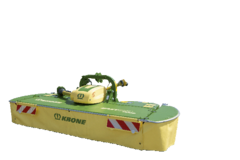
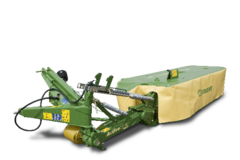
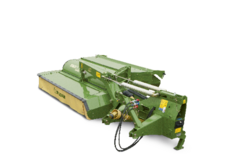
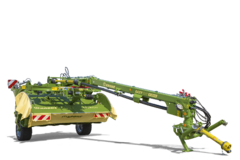
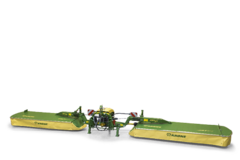
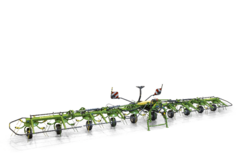
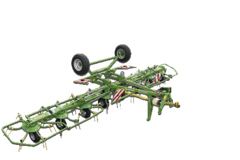
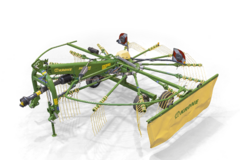

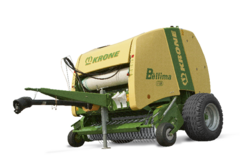

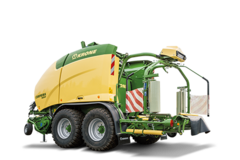
![[Translate to EN:] [Translate to EN:]](/fileadmin/_processed_/1/c/csm_VariPack_Freisteller_01_a70a02f9f9.png)
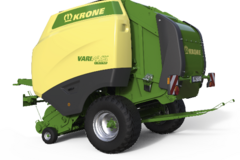

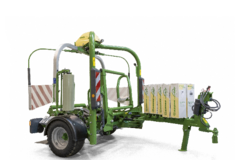
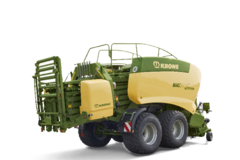
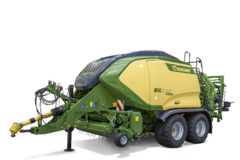
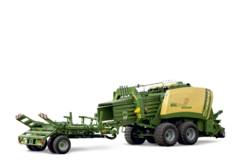
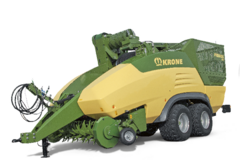
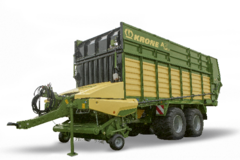
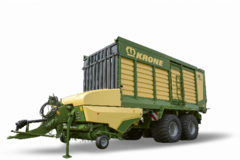
![[Translate to EN (UK):] [Translate to EN (UK):]](/fileadmin/_processed_/4/f/csm_RX_Freisteller_468x468px_6ecb398329.png)
![[Translate to EN (UK):] [Translate to EN (UK):]](/fileadmin/_processed_/0/a/csm_ZX_Freisteller_468x468px_cc1e39f93f.png)

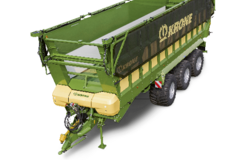
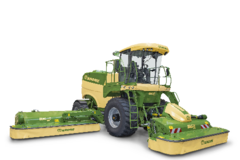
![[Translate to EN (UK):] Testname Forage harvesters - BiG X 480 · 530 · 580 · 630](/fileadmin/_processed_/4/7/csm_BiGX480_Freisteller_468x468px9_1017c2fa62.png)
